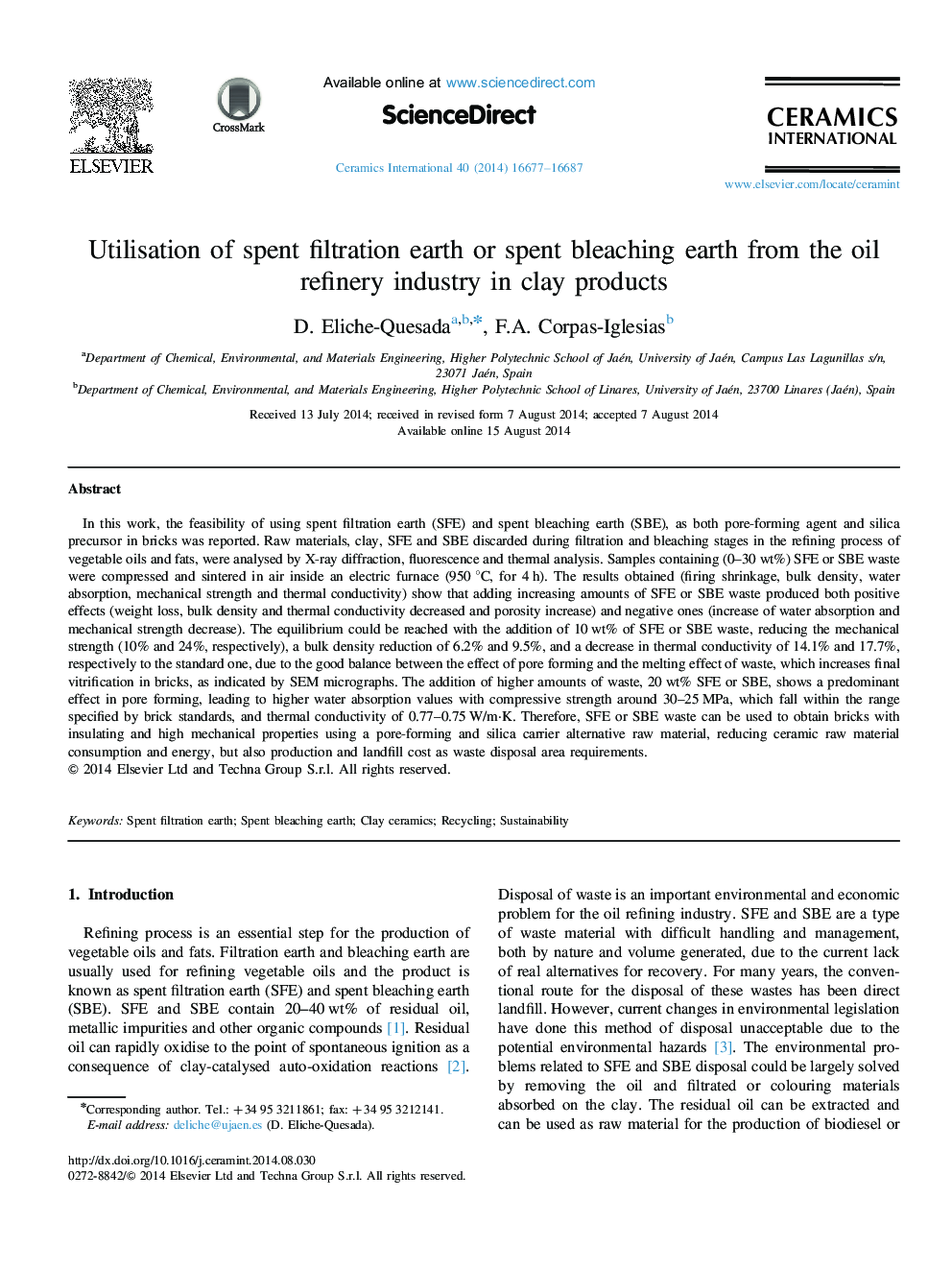| کد مقاله | کد نشریه | سال انتشار | مقاله انگلیسی | نسخه تمام متن |
|---|---|---|---|---|
| 1460553 | 1509799 | 2014 | 11 صفحه PDF | دانلود رایگان |
In this work, the feasibility of using spent filtration earth (SFE) and spent bleaching earth (SBE), as both pore-forming agent and silica precursor in bricks was reported. Raw materials, clay, SFE and SBE discarded during filtration and bleaching stages in the refining process of vegetable oils and fats, were analysed by X-ray diffraction, fluorescence and thermal analysis. Samples containing (0–30 wt%) SFE or SBE waste were compressed and sintered in air inside an electric furnace (950 °C, for 4 h). The results obtained (firing shrinkage, bulk density, water absorption, mechanical strength and thermal conductivity) show that adding increasing amounts of SFE or SBE waste produced both positive effects (weight loss, bulk density and thermal conductivity decreased and porosity increase) and negative ones (increase of water absorption and mechanical strength decrease). The equilibrium could be reached with the addition of 10 wt% of SFE or SBE waste, reducing the mechanical strength (10% and 24%, respectively), a bulk density reduction of 6.2% and 9.5%, and a decrease in thermal conductivity of 14.1% and 17.7%, respectively to the standard one, due to the good balance between the effect of pore forming and the melting effect of waste, which increases final vitrification in bricks, as indicated by SEM micrographs. The addition of higher amounts of waste, 20 wt% SFE or SBE, shows a predominant effect in pore forming, leading to higher water absorption values with compressive strength around 30–25 MPa, which fall within the range specified by brick standards, and thermal conductivity of 0.77–0.75 W/m
• K. Therefore, SFE or SBE waste can be used to obtain bricks with insulating and high mechanical properties using a pore-forming and silica carrier alternative raw material, reducing ceramic raw material consumption and energy, but also production and landfill cost as waste disposal area requirements.
Journal: Ceramics International - Volume 40, Issue 10, Part B, December 2014, Pages 16677–16687
